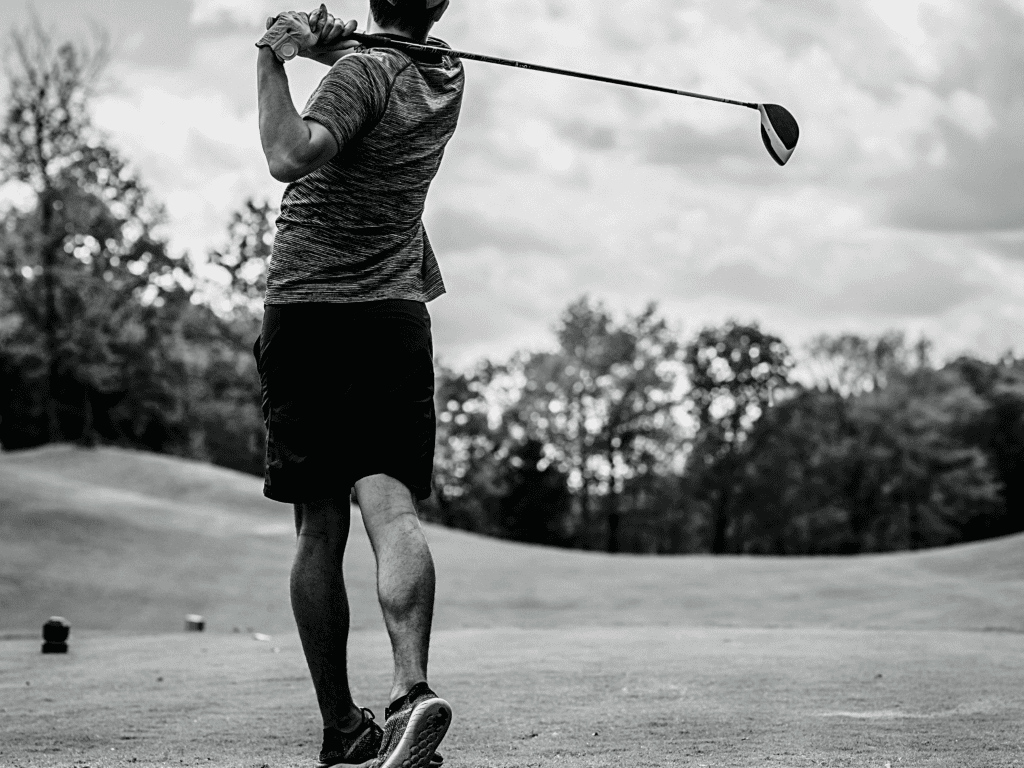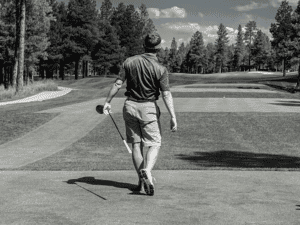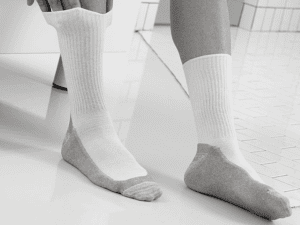Intro
Golf is an incredibly popular sport, but it tends to take a toll on the body over time. Many golfers experience pain in their joints and muscles due to the biomechanics of the golf swing. Fortunately, orthotics can provide relief and help prevent injury. Orthotics are devices that are designed to support, align, correct, and protect the joints of the body, and they are becoming increasingly popular among golfers who are looking for a way to reduce pain and keep playing their favourite game. In this blog post, we will discuss how orthotics can help alleviate pain and prevent injury while playing golf.

Biomechanics of the Golf Swing
To understand how orthotics can help with golf injuries, it’s important to first understand the biomechanics of the golf swing. The golf swing involves a complex combination of movements that require coordination and balance.
During the swing, the golfer must shift their weight from their back foot to their front foot, rotate their hips and torso, and extend their arms and wrists. These movements place stress on the body, particularly the back, shoulders, hips, and knees. Golfers often experience pain and injuries in these areas as a result of the repetitive nature of the sport. For example, low back pain is common among golfers due to the twisting motion of the lumbar spine during swing.

Types of Orthotics for Golfers
Orthotics can help to correct alignment issues, provide additional support, and alleviate pressure on the body. When it comes to orthotics, there are a few different options that can benefit golfers specifically. Insoles, for example, can improve shock absorption and reduce impact on the feet, knees, and hips.
Another type of orthotic that can be beneficial for golfers is a back brace. While it may not seem like the back is heavily involved in the golf swing, it is an essential component. During swing the lumber spine is subjected to a very large rotational force. A back brace can help to alleviate pain and prevent injury in the lower back by helping to stabilise the spine and reduce strain on the lower back muscles.
Overuse injuries of the wrists, elbows and shoulders are also relatively common amongst golfers. Golfer’s elbow is a condition that causes pain on the inside of the elbow although it is not uncommon for golfers to also suffer from tennis elbow which causes pain on the outside of the elbow. The pain, numbness and tingling caused by golfer’s elbow and tennis elbow can also extend down into the forearm, wrist and fingers. Wrist tendonitis usually affects the leading hand and typically causes pain and a popping sensation in the joint.
During swing, a lot of force is applied through the shoulder joint. This repetitive force or stress can cause or exacerbate pain around the shoulder. One of the most common causes of shoulder pain in golfers is an injury to the rotator cuff. Whilst a rotator cuff tear would likely mean a period of rest from the game, a shoulder support can be used post-recovery to reduce stress on the rotator cuff and reduce risk of reinjury. A shoulder support can also be helpful to reduce pain caused by osteoarthritis of the shoulder, shoulder instability or shoulder impingement.
By using orthotics to improve alignment and support, golfers can reduce their risk of injury and improve their overall performance on the course. So, if you’re a golfer who’s struggling with pain or discomfort, consider investing in orthotics to help you get back on top of your game. It’s important to note that the type of orthotic that may be of most benefit to a golfer will depend on their individual needs and any pre-existing conditions or injuries. Working with a healthcare professional to determine the best course of action is always recommended.



